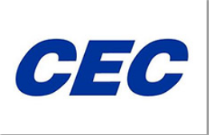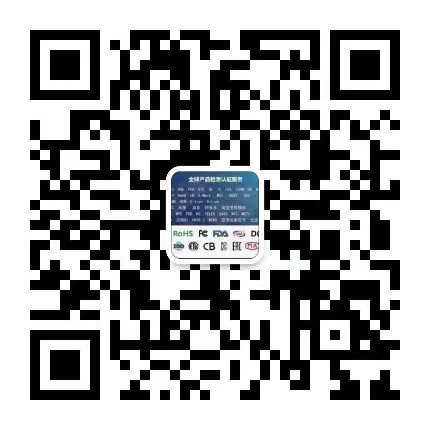
Tel :18138443506
Phone :13798439478
Email :mammon.xu@zhixin-cert.com
Addr :Floor 3, No. 5, Shanglian New Village, Shangcun Community, Gongming Street, Guangming District, Shenzhen (Chuangxin Office Building)

CEC certification is the Appliance Efficiency Regulation implemented by California Energy Commission on December 30, 2005. The implementation of this regulation aims to improve the efficiency of electric products, save energy, reduce gas emissions and greenhouse effect.
With more and more electronic products appearing in daily life, "energy conservation" will become an urgent problem that all people must face in the 21st century. The California Energy Commission (CEC) will implement a new mandatory standard on the energy efficiency of AC-DC and AC-AC external power suppliers on July 1, 2006. At that time, almost all electronic products will be impacted.
This standard will cover all products using external power supplies (such as chargers and adapters), including mobile phones, home wireless phones, portable music players, handheld game consoles, toys, etc., and require these products to use energy in a more efficient way in standby and use states.
This means that after the middle of 2006, all transformers, external power supplies, adapters and chargers used in the United States and to be sold to the United States must be changed in design.
In addition to saving energy, CEC's new specifications will also have a significant impact on environmental protection. According to the company's statistics, if all California's external power supplies can comply with the new standard, California will be able to reduce more than 360000 tons of carbon dioxide emissions each year, which is equivalent to the annual emissions of 60000 vehicles.
This regulation stipulates that electrical products must first meet the equipment energy efficiency regulations when they are sold in California, the United States. This regulation specifies energy efficiency index requirements, measurement methods and phased implementation plans for 58 categories of electrical products. According to the requirements of this regulation, electrical products must be tested by a qualified laboratory according to the corresponding regulations or standards of the United States, and can only be sold in California, the United States, after proving that they meet the requirements.
Test method for CEC certification
introduction
CEC is the abbreviation of the California Energy Commission, whose responsibility is to make the energy market develop towards benign competition.
Since July 1, 2006, all external power supplies (AC/AC, AC/DC adapter) exported to California must meet the California Energy Efficiency Regulations issued by the California Energy Commission, which is a new energy efficiency regulation developed on the basis of the American Energy Star.
Below, we will analyze the specific scope, definition, testing, marking and precautions of CEC certification.
Range
The definition range of CEC external power supply is: AC/DC of single-phase voltage input or AC/AC external power adapter.
definition
Here, we will introduce some nouns in CEC test standards, such as
⑴ Active Mode: operation mode. It refers to the mode of power supply under working conditions.
⑵ Active Mode Efficiency: working mode energy efficiency. The energy efficiency of the working mode is equal to the ratio of the real output power and the real input power under the working mode. It is usually expressed in percentage.
(3) No Load: no load mode. It refers to the mode when the product is connected to the input voltage but not to the load.
(4) No Load Power: No load power. It refers to the input power of the product in the no-load mode.
⑸ UUT: abbreviation of UNIT UNDER TEST.
(6) Ambient temperature: ambient temperature. It refers to the ambient temperature tested at that time.
(7) Power Factor (True): power factor. Its value is equal to the ratio of real loss power to apparent power.
(8) Total Harmonic Distortion (THD): total harmonic distortion.
(9) Apparent Power (S): Apparent power. The product of input voltage and input current.
(10) Nameplate Input Voltage: Nameplate input voltage refers to the product input voltage declared on the label by the customer.
(11) Nameplate Input Frequency: the frequency of the input voltage declared by the customer on the nameplate.
(12) Nameplate Output Voltage: the customer's nominal product output voltage on the nameplate. (13) Nameplate Output Current: the customer's nominal product output current on the nameplate.
test
⑴ Summary: Unless otherwise specified, the test adjustment shall be conducted according to the following test conditions. (2) Test
Instrument: The power measurement must be performed with a calibrated volt ampere meter or power analyzer. The instrument must be calibrated according to IEC 62301. When the test power is 0.5W, the error must be less than or equal to 2%. When the test power is less than 0.5W, the error must be less than 0.01W. The accuracy of the power test instrument must reach 0.01W or better. The error of voltage and current must be less than or equal to 2%. (3) According to the standard requirements of IEC 62301, the air flow in the test room must be 0.5m/s or less, the ambient temperature must be controlled within the range of 23 ℃± 5 ℃, and the samples must be tested on the test bench without heat conduction. For products used outdoors, if there are additional test requirements, they must be stated in the report.
(4) The test voltage shall comply with the standard requirements of IEC 62301. The fluctuation range of the test voltage shall not exceed ± 1% of the specified test voltage and ± 1% of the specified test frequency. If the input voltage marked on the nameplate is wide voltage, the test voltage is 115V/60Hz and 230V/50Hz. If the nameplate is marked with single voltage input, the test voltage is one of the two test voltages close to each other.
(5) The results show that the California Energy Efficiency Law stipulates that since July 1, 2006, all external power supplies exported to California must meet the average energy efficiency provisions and no-load power requirements in the following table (see Table 1)
Since January 1, 2008, all external power supplies exported to California must meet the new average energy efficiency regulations and no-load power requirements in the following table TABLE2 (see Table 2)
All tests must take into account the load conditions of 100%, 75%, 50% and 25% of the output current marked on the nameplate (note: the error range of the load here cannot exceed ± 2%), record the input power, input current, power factor, output voltage and THD (total harmonic distortion) respectively, and then
Energy efficiency=(output voltage × Output current)/input power
Calculate the current energy efficiency value, and then average the energy efficiency values measured under the four load conditions of 100%, 75%, 50% and 25% to obtain the average energy efficiency value. In addition, the input power value under the load with the output current of 0% must also be tested. The average energy efficiency value and no-load power value obtained from the above tests are used to judge whether they meet the energy efficiency mark according to the limit requirements of TABLE1 and TABLE2.


Service Hotline
18138443506
13798439478